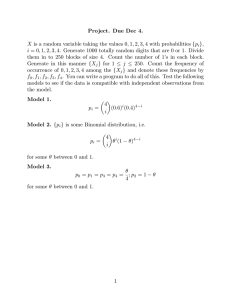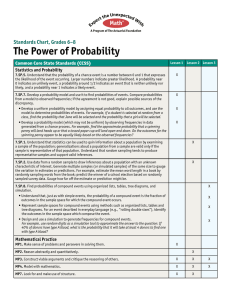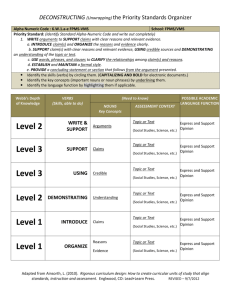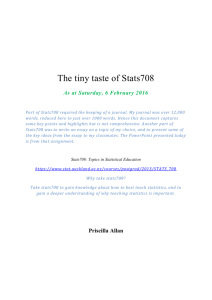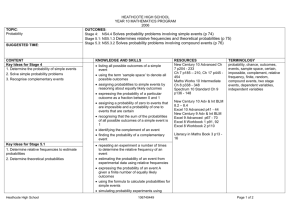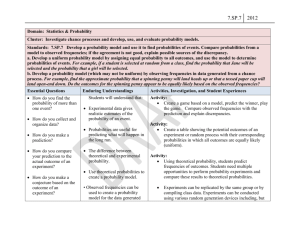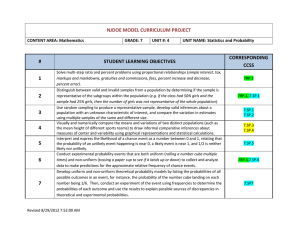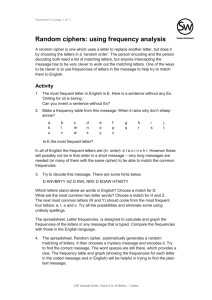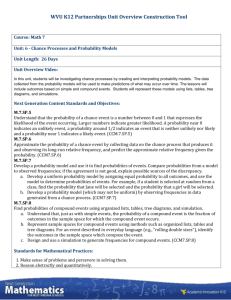7.SP.7 - Woodburn School District
advertisement
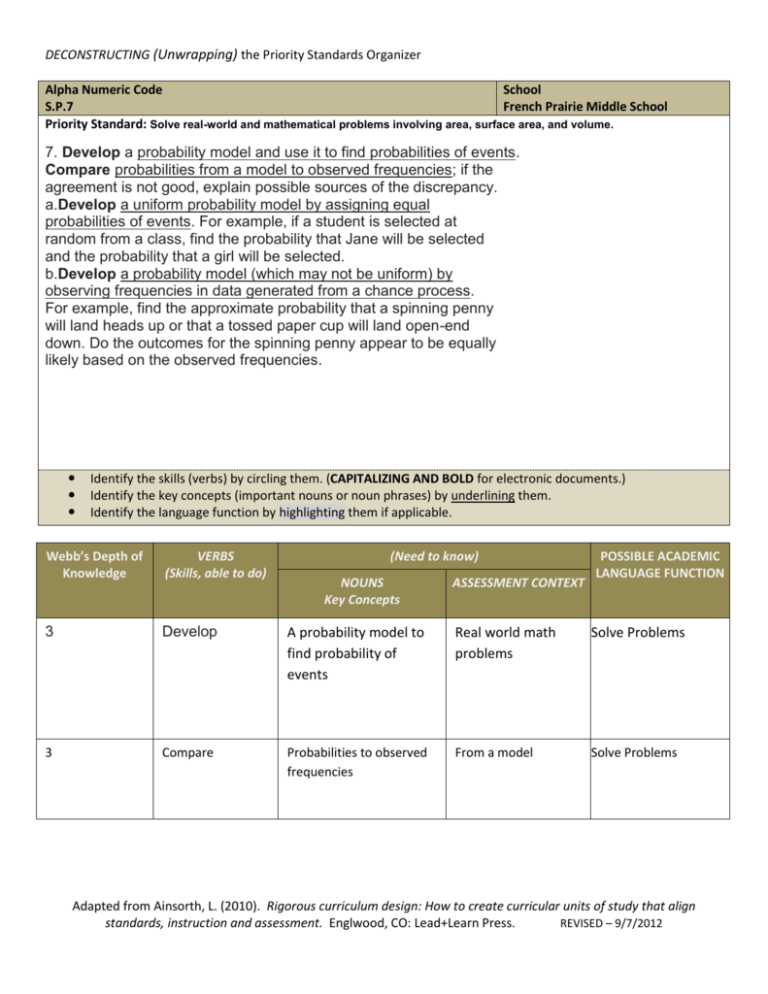
DECONSTRUCTING (Unwrapping) the Priority Standards Organizer Alpha Numeric Code School S.P.7 French Prairie Middle School Priority Standard: Solve real-world and mathematical problems involving area, surface area, and volume. 7. Develop a probability model and use it to find probabilities of events. Compare probabilities from a model to observed frequencies; if the agreement is not good, explain possible sources of the discrepancy. a.Develop a uniform probability model by assigning equal probabilities of events. For example, if a student is selected at random from a class, find the probability that Jane will be selected and the probability that a girl will be selected. b.Develop a probability model (which may not be uniform) by observing frequencies in data generated from a chance process. For example, find the approximate probability that a spinning penny will land heads up or that a tossed paper cup will land open-end down. Do the outcomes for the spinning penny appear to be equally likely based on the observed frequencies. Identify the skills (verbs) by circling them. (CAPITALIZING AND BOLD for electronic documents.) Identify the key concepts (important nouns or noun phrases) by underlining them. Identify the language function by highlighting them if applicable. Webb’s Depth of Knowledge VERBS (Skills, able to do) (Need to know) 3 Develop A probability model to find probability of events Real world math problems Solve Problems 3 Compare Probabilities to observed frequencies From a model Solve Problems NOUNS Key Concepts ASSESSMENT CONTEXT POSSIBLE ACADEMIC LANGUAGE FUNCTION Adapted from Ainsorth, L. (2010). Rigorous curriculum design: How to create curricular units of study that align standards, instruction and assessment. Englwood, CO: Lead+Learn Press. REVISED – 9/7/2012 3 Develop A uniform probability model by assigning equal problems Real world math problems Solve Problems 3 Develop A probability model (may not be uniform) by observing frequency in data Real work math problems Solve Problems Adapted from Ainsorth, L. (2010). Rigorous curriculum design: How to create curricular units of study that align standards, instruction and assessment. Englwood, CO: Lead+Learn Press. REVISED – 9/7/2012
